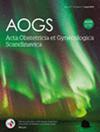A double-blind, randomized, placebo-controlled trial of melatonin as an adjuvant agent for induction of labor: The MILO trial
Abstract
Introduction
Melatonin has been suggested to have a biological role in the onset and progress of labor. We tested the hypothesis that the addition of melatonin during an induction of labor will reduce the need for a cesarean birth.
Material and Methods
This trial underwent protocol amendments that are detailed in the main text of the article. This trial is registered with the Australian and New Zealand Clinical Trials Registry (ACTRN12616000311459). At a multi-center health service including secondary and tertiary obstetric hospitals, we performed a randomized, double-blind, placebo-controlled trial in women with a singleton cephalic pregnancy, free of significant maternal or perinatal complications who were undergoing induction of labor (with or without cervical ripening). Women were randomized to 10 mg melatonin vs placebo, with cervical ripening as required, and then 6-h during their induction of labor to a maximum of four doses or until birth. The primary outcome was cesarean birth. Secondary outcomes included labor, maternal, and neonatal outcomes. Data were analyzed using intention to treat. Sub-group analyses based on mode of ripening and parity were also performed.
Results
Between 2019 and 2021 we randomized 189 women (103 to melatonin and 86 to placebo). The study was prematurely terminated due to logistical complications resulting from the COVID-19 pandemic. Cesarean rates were 28/103 (27.2%) in the melatonin group vs 20/84 (23.3%) in the placebo group (RR 1.17 95% CI 0.71–1.92). There were no significant differences in rate of cesarean birth between the melatonin and placebo groups for failure to progress (13.4% and 9.3%, respectively, RR 1.46; 95% CI 0.64–3.32) or suspected fetal distress (10.7% and 10.5%, respectively, RR 1.02; 95% CI 0.44–2.34). The melatonin group had significantly lower rates of spontaneous vaginal birth within 24 h (35.0% vs. 50.0%; RR 0.70 95% CI 0.50–0.98). The rates of secondary outcomes such as total length of labor, rate of postpartum hemorrhage, and instrumental birth were comparable. Babies born in the melatonin group were more likely to need admission to the special care nursery, namely for hypoglycemic monitoring (18.5% vs. 8.1% RR 2.26; 95% CI 1.00–5.10).
Conclusions
In women undergoing induction of labor, melatonin does not reduce the cesarean section rate. Melatonin use intrapartum may also be associated with neonatal hypoglycemia.


 求助内容:
求助内容: 应助结果提醒方式:
应助结果提醒方式:


